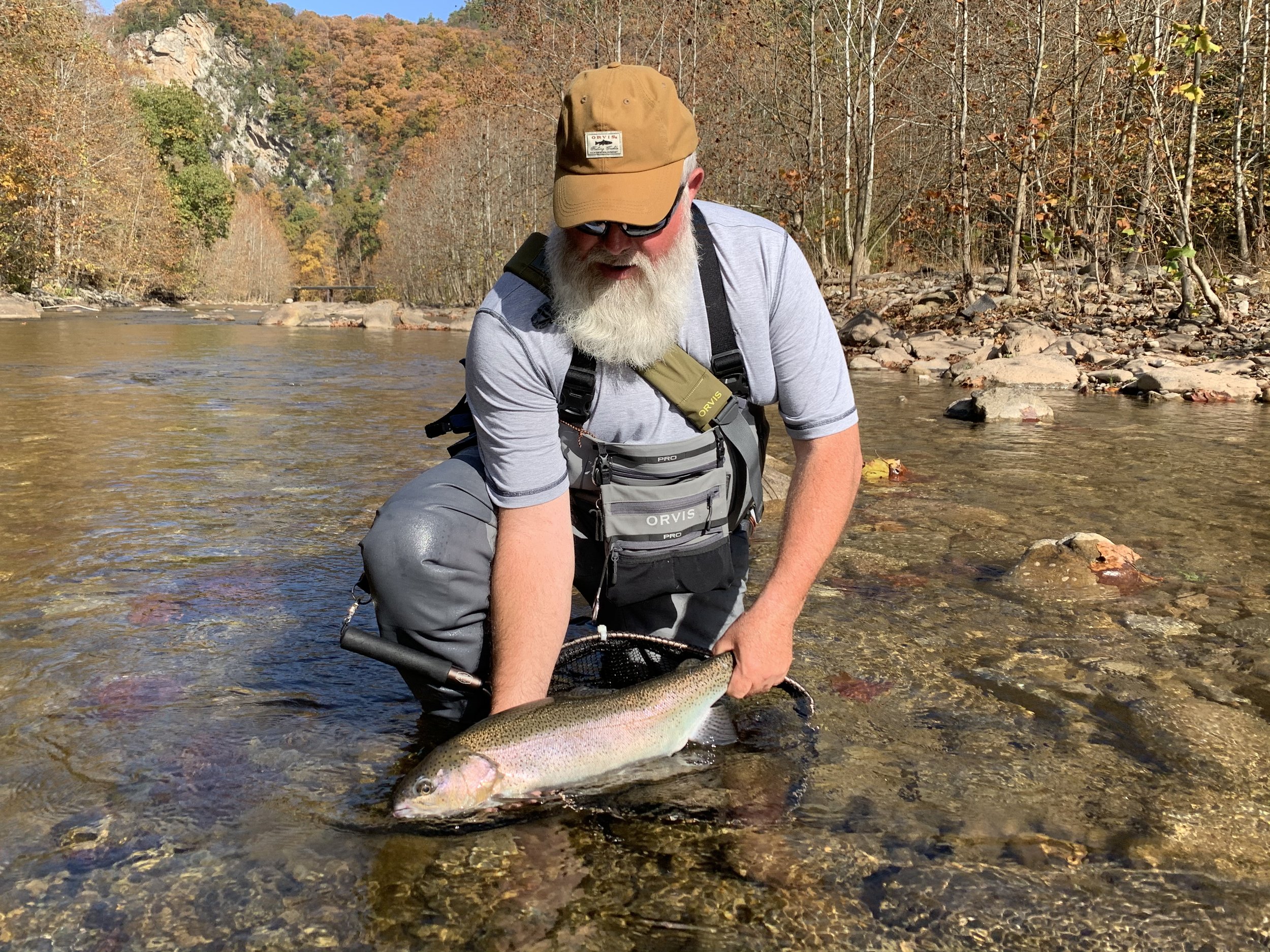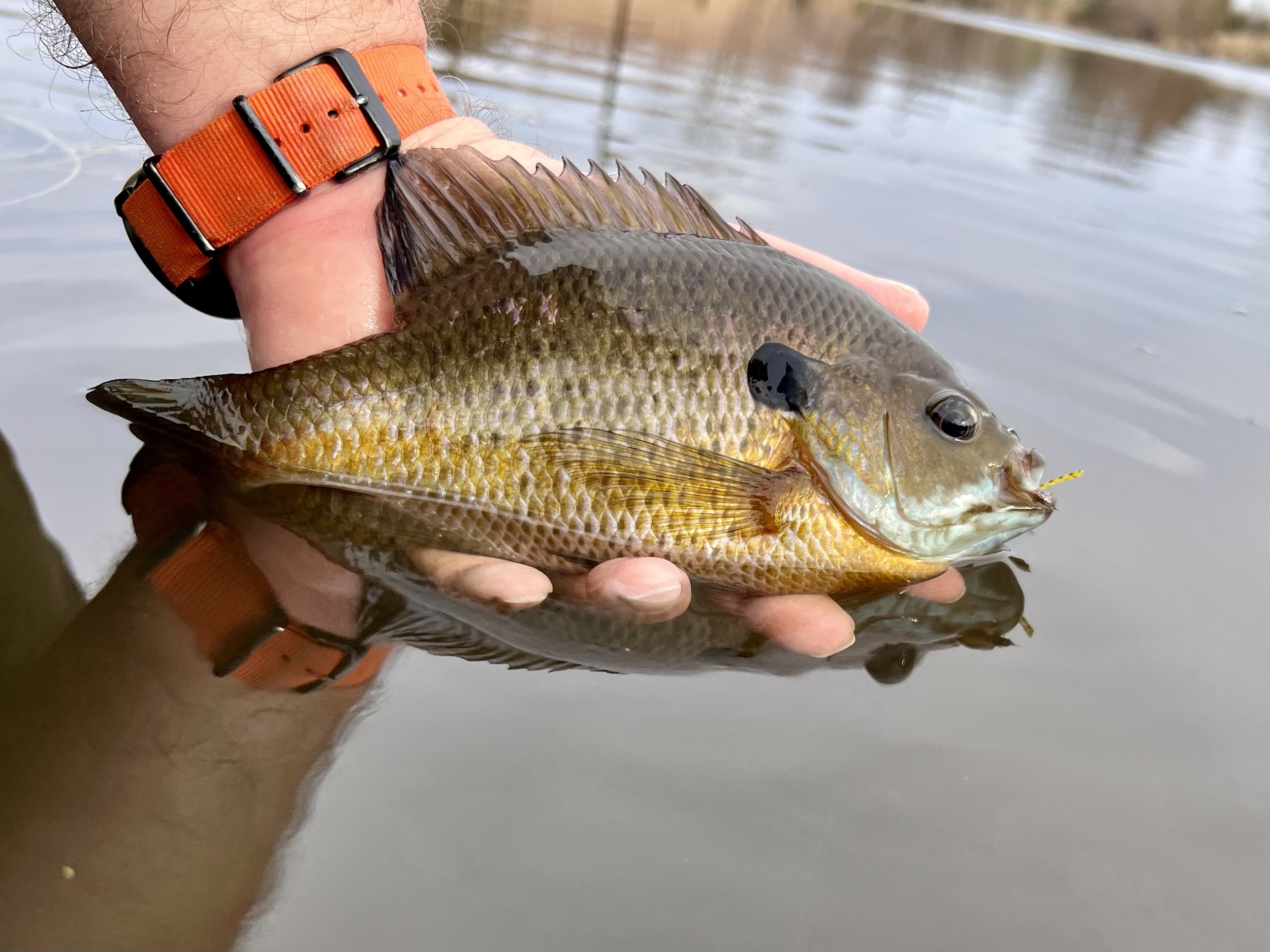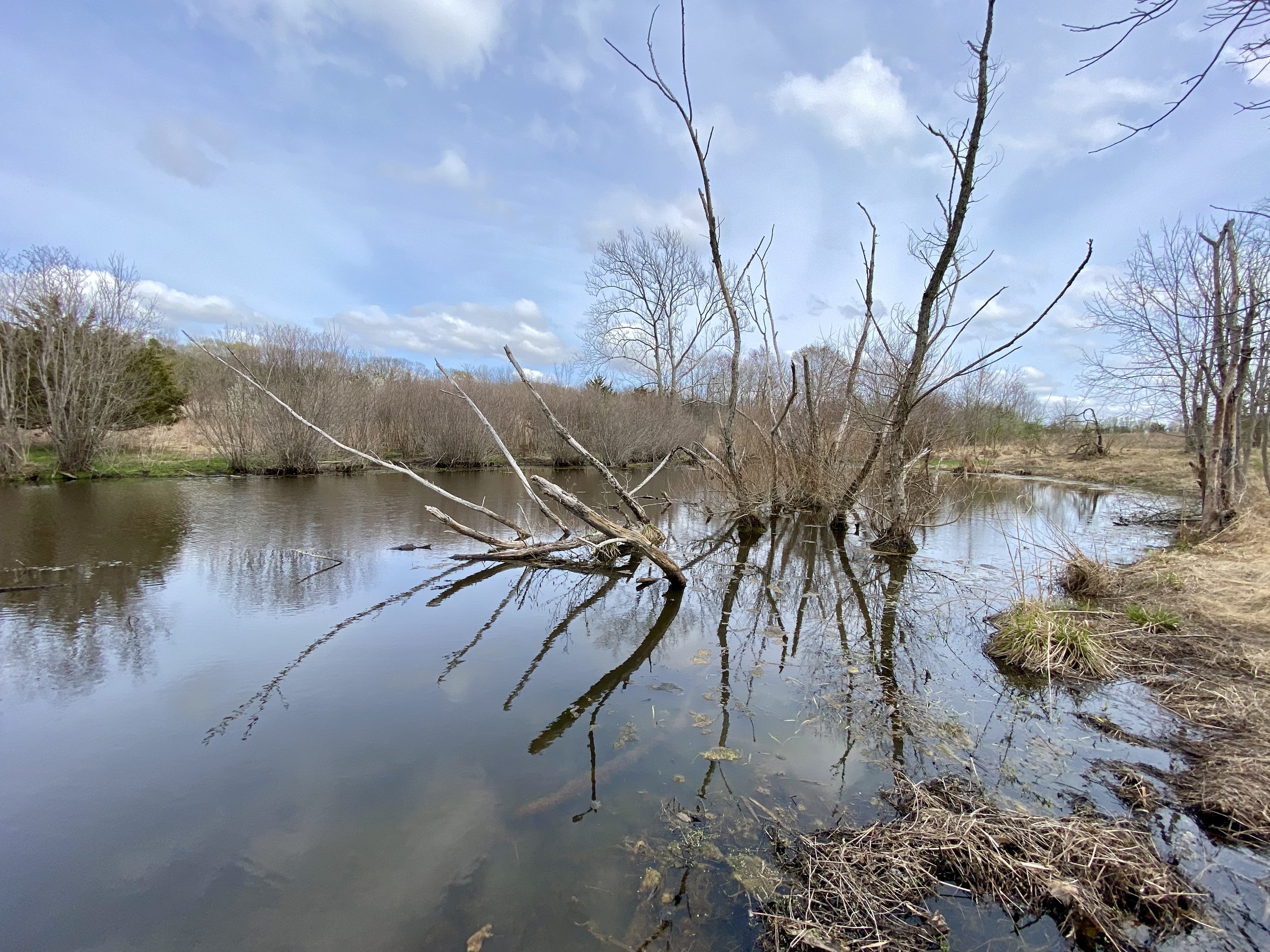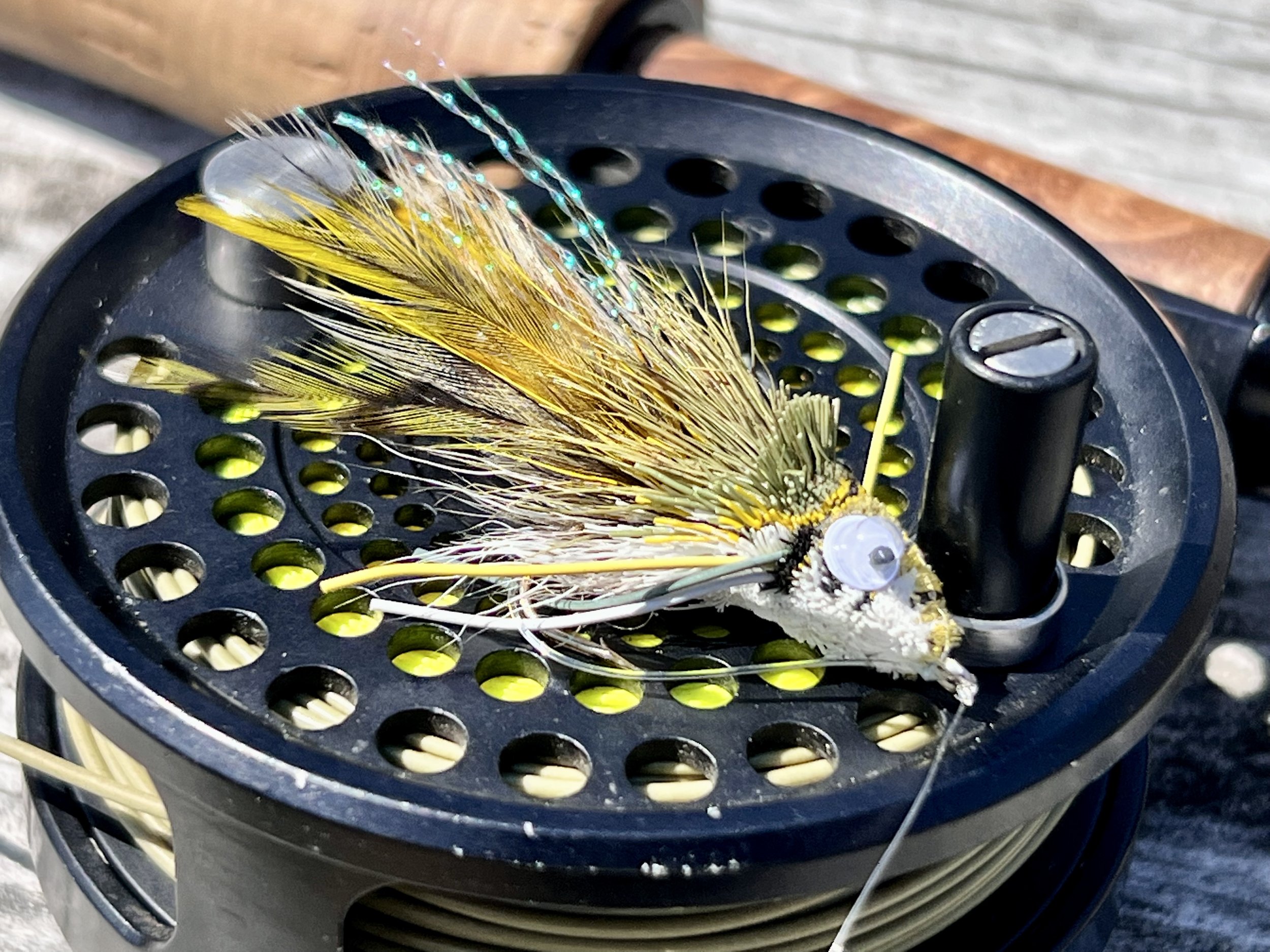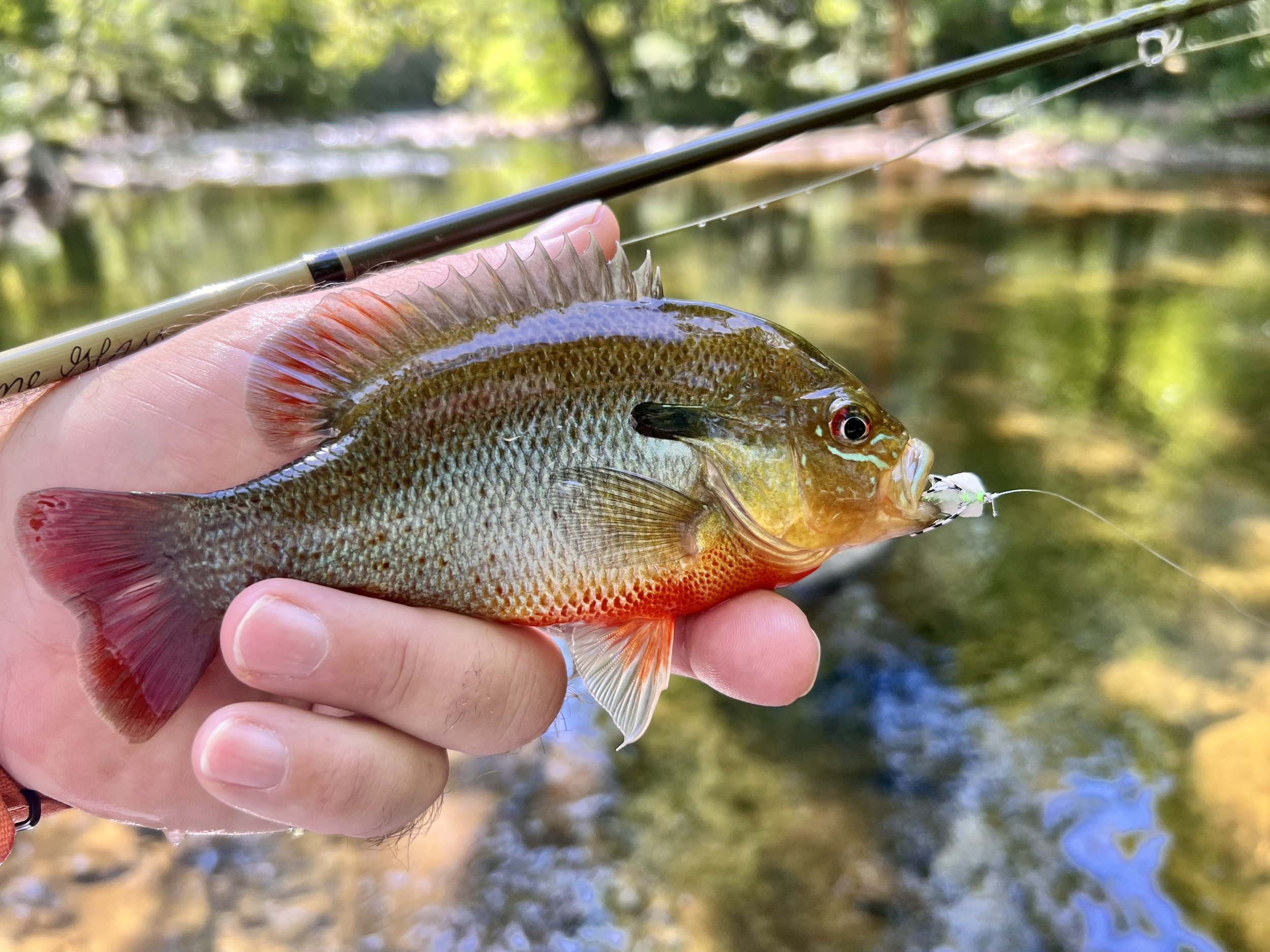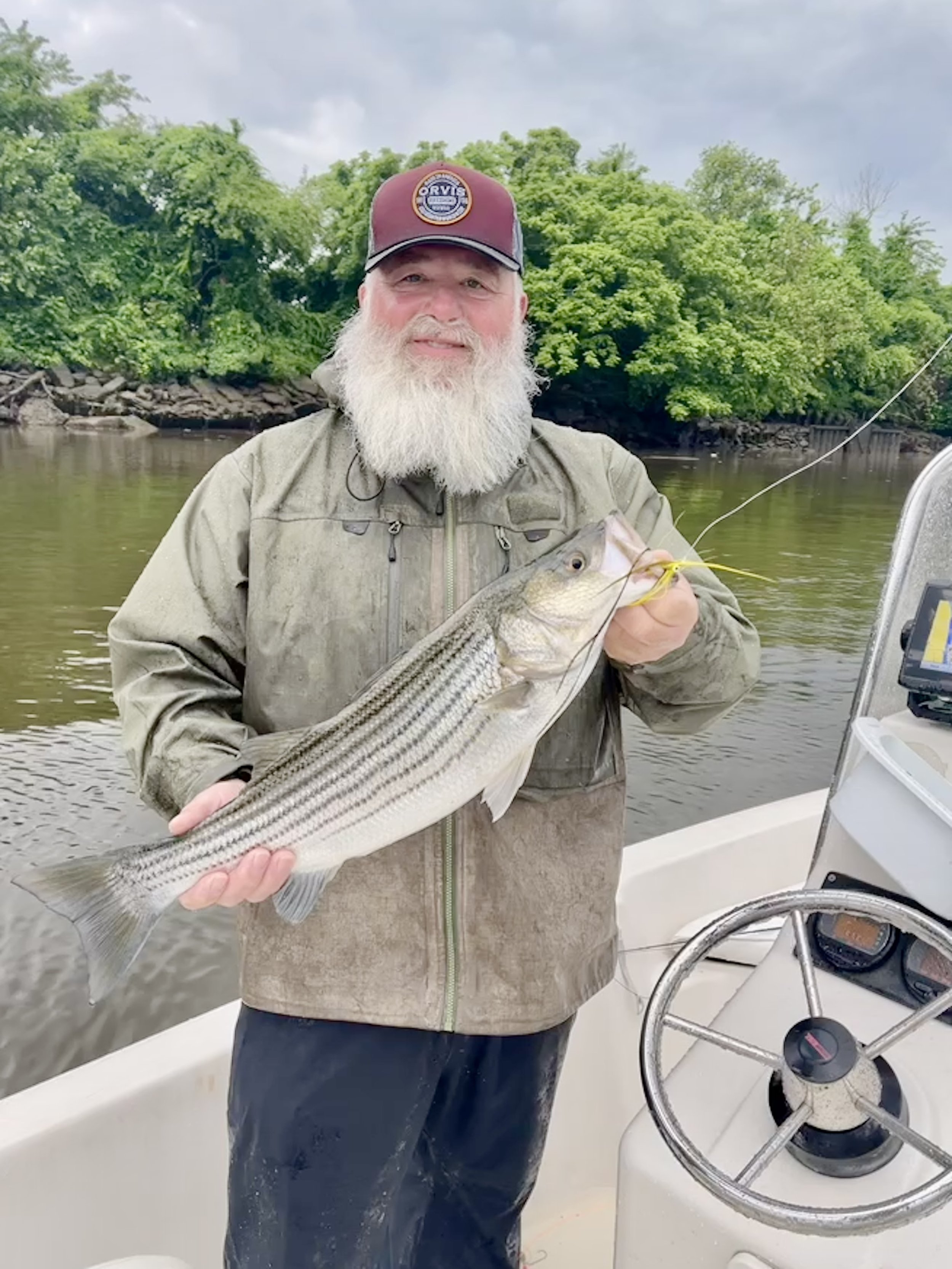Many people associate me with panfish, which is to be expected for someone running a website and blog dedicated to fly fishing for panfish. However, many folks don't know that I am a fly fishing guide specializing in fishing for trout. Although I spend countless hours chasing sunfish and bass, I spend just as much time wading trout streams throughout the country.
It’s no trout stream, but this neighborhood lake is loaded with fish ready to eat my flies.
Over the years, I have seen my fly fishing abilities improve, and I owe most of that to my daily fishing on warm water lakes and ponds. My closest trout stream is over an hour away. Therefore, on days when I am not guiding or spending time on a trout stream for myself, you will almost always find me cruising the shoreline of one of the lakes and ponds close to my home. Warm water fly fishing allows me to sneak out for short fishing sessions whenever I have a spare half hour or more. Trout fishing is often a daylong affair because of the time required to drive back and forth to the water.
Spending time on local lakes chasing panfish WILL make you a better fly fisher.
Practice makes perfect
The simple truth is the more you do something, the better you will get at it. So all those hours spent chasing panfish on the fly have improved my fly fishing on many levels, making me a better angler overall.
Panfish often hold very tight to cover such as these fallen trees and willow roots. Accurate casts are need to pull fish out of such places.
Precision casting
Fly fishing for trout, specifically dry fly fishing requires pinpoint accuracy regarding casting. When a trout shows itself by a rise form left behind by feeding on the surface, you must precisely deliver your offering to that fish. In many cases, the trout will ignore a cast that is more than a few inches off target. Any fish in moving water needs to conserve energy as much as possible. Trout are often unwilling to move more than an inch or two out of their feeding lane, requiring you to drop your fly exactly where you meant to.
While bluegills and other sunfish may not be as picky (although sunfish in moving water can be just as finicky as trout), they live in and around cover. This fact requires you to make accurate casts, whether casting a nymph into the tiny open pocket of water in a dense field of lily pads or dropping a popper alongside the limbs of a downed tree. Casting accuracy can make the difference between catching fish and spending time un-snagging your fly from lily pads, shoreline bushes, and tree limbs.
The fly fishing students are practicing on a warm water lake. The best part is they all caught fish while learning to cast.
Improving your cast
Good casting techniques are essential to success on the water. You will do well on most trout streams if you possess solid techniques and can make accurate 30-foot casts. But sometimes, you need to stretch that cast out a little farther. Many anglers believe the secret to a long cast is the application of more power. The truth is that good technique will get your line out further and with more control. A long cast is useless if it does not hit its target.
I am frequently presented with situations on my warm water lakes and ponds where a long, accurate cast is needed. So I get to practice my long cast game regularly. Precise techniques, timing, and good casting mechanics are more important than power. Once you master the cast's foundational elements, you can add single and double hauling to stretch that line further and not break a sweat doing it! And you can practice it all while fishing for the lowly bluegill. Improving your casting in any way will serve you well on the trout stream.
In warm water fishing you become proficient manipulating flys like this deer hair diver. It’s all done with line control.
Line control
Line control is a crucial element of fly fishing, whether giving action to a fly or fighting a fish. Fly fishing in still water allows you to focus on your line handling, as any movement given to the fly must be done by manipulating the line. The various line handling techniques I use while fishing for panfish, such as stripping, hand twisting, or figure eight retrieves and strumming ( a method used to animate a fly without moving it much), all have applications on the trout stream. Again practice makes perfect.
Some times big fish eat flies intended for little fish. They give you great practice landing larger fish on light tackle.
Landing that big one
One of the things I love most about fly fishing for panfish is the regular encounters with larger predators that often outmatch the light tackle used for smaller sunfish. Dealing with these predators gives me a lot of practice fighting and landing big fish on light tackle. So when that day comes when that thirty-inch brown rises to sip that size 14 rusty spinner off the surface, I will be on top of my game and ready to do battle with a giant fish on light tackle.
Sunfish like the redbreast are typically found in moving water where they behave much like a trout.
Fishing moving water
Fortunately, panfish don't only live in still water; they also occupy many streams and rivers in my area. When I fish in these environments, I practice moving water line handling skills like reach casts and mending. Like their cold water cousins, panfish in moving water often set up in feeding lanes and seldom stray out of them to grab a meal. Fishing streams and rivers also force me to practice reading the water and all that wading keeps the legs in good shape for long sessions on the trout stream.
Whether your tying big foam bugs for panfish or tiny dry flies for trout, practice is practice!
Fly tying
All that warm water fly fishing requires a lot of flies, so all that time spent behind the vise is improving my craft with every fly I add to the box. I have said it more than once in the post, but I can't emphasize it enough. The more you do a thing, the better you will be at it.
Fly fishing for panfish will make you a better fly fisher whether you fish for trout or saltwater species like this striper.
So if you want to improve your trout game or other fly fishing opportunities like fishing in saltwater, spend a little more time on that local bluegill pond that you are sure to have nearby your home. You will become a better fly fisher and enjoy yourself far more than casting a line on your front lawn or the neighborhood athletic field, and you won't mess up that expensive fly line in the process!
